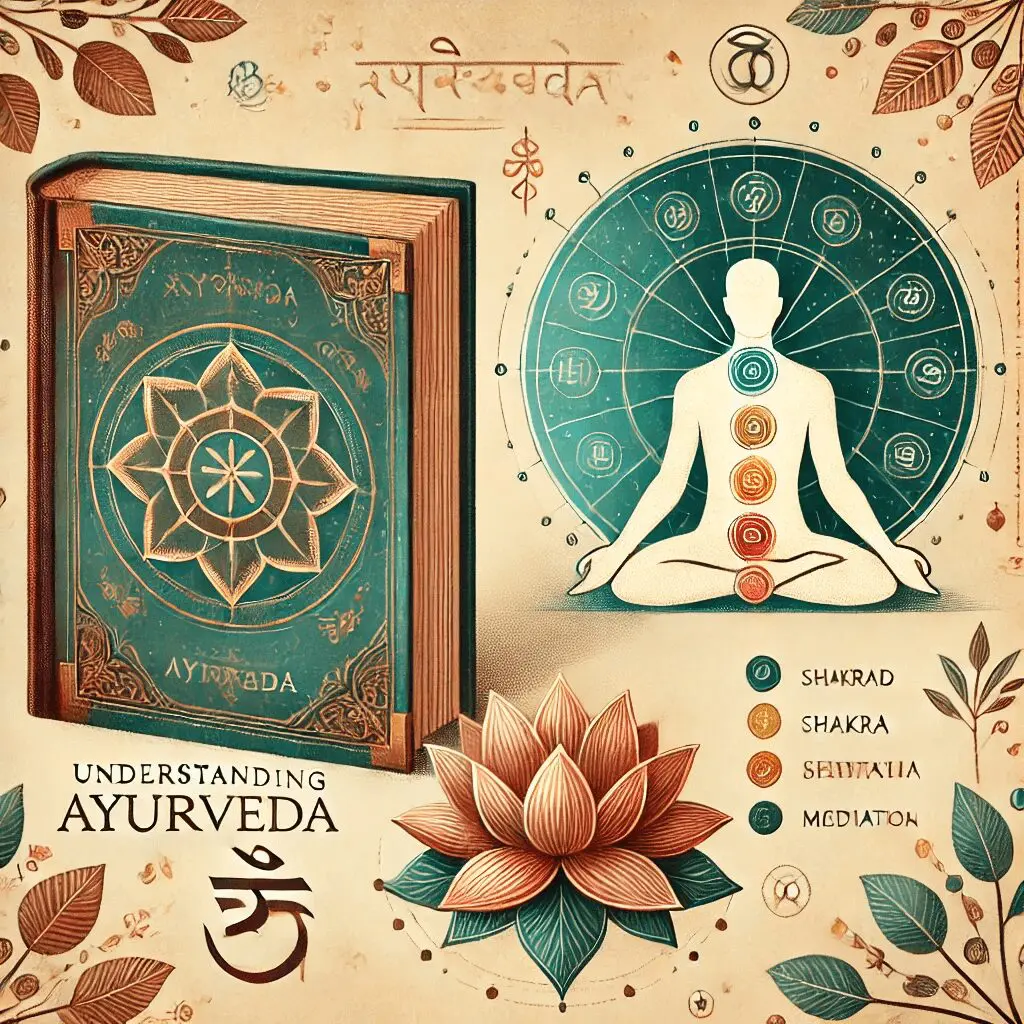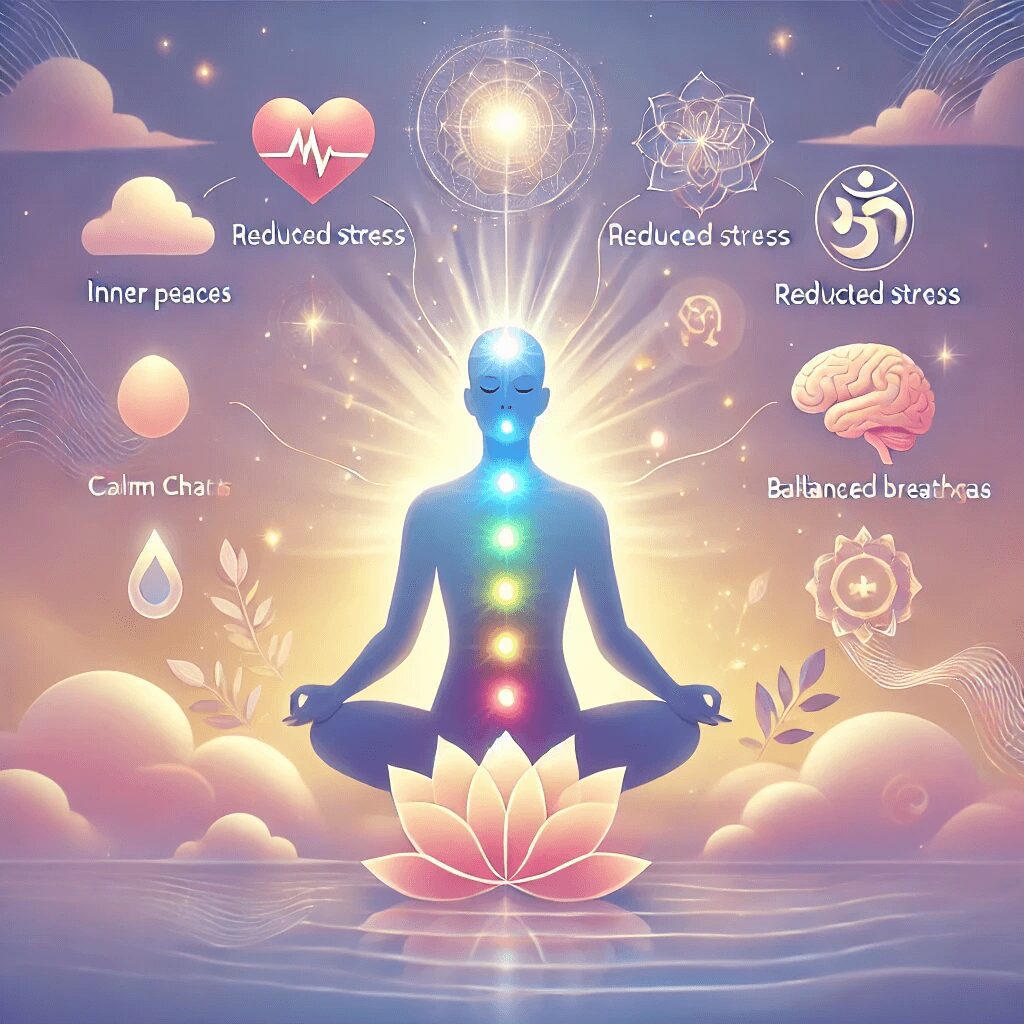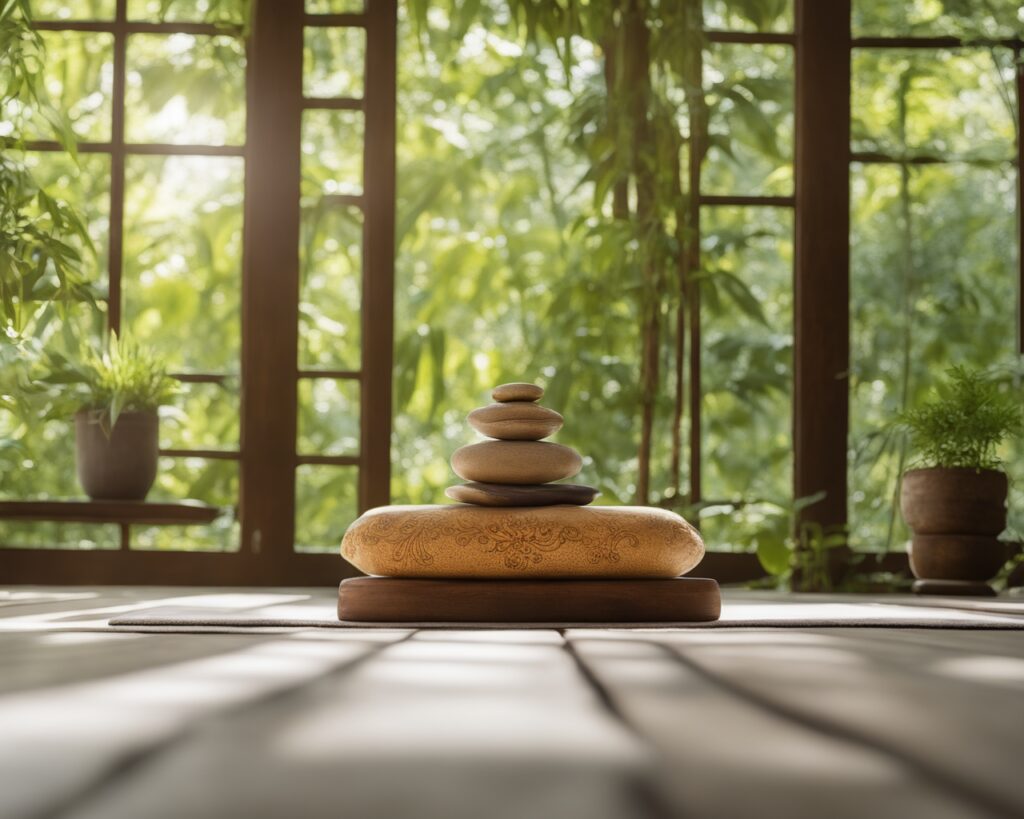Guided Meditations
Unlocking Wellness: The Power of Ayurvedic Guided Meditations
By Dennis Bluthardt at Namaste Studios
Ayurvedic-guided meditations elevate our mindfulness to the next level. These are not your typical ‘focus on your breath’ meditations; they are distinctly and holistically (I suggest, in the Ayurvedic way!) approached to providing you with a path to the next level of wellness. Its methodology is very similar to Dosha’s personalized approach to yoga classes. These guided meditations also seek to pacify whatever dosha aggravation we may be experiencing at that time.
What does that mean for you? It means a more profound, sexier Savasana! You all know the feeling of “if we could just stay here and sleep for 10 minutes more”; we have all been there. The concept uses Ayurvedic elements and principles to ‘hack’ the guided meditation portions of your yoga classes to provide your clients with a more rejuvenating relaxation period. Allowing you to achieve higher levels of focus and relaxation, thus bringing the body back to homeostasis much more efficiently.
Whether you incorporate it or not, other proven health benefits are associated with these non-traditional meditation styles. Often, people who partake in these sessions report the following advantages:

Understanding Ayurveda and Its Connection to Meditation
Ayurveda is an old type of medicine that comes from India. According to Ayurveda, the goal is to balance your mind, body, and spirit. Only when all three are balanced can good health indeed be achieved. These standards are a reasonable way to approach health and wellness, but there’s much more to Ayurveda than you might think. Ayurveda involves a good understanding of an individual’s constitution or Dosha. The Dosha identifies characteristics that are physically and mentally unique to a person. Solution-building consists of a strategy that includes some lifestyle, diet, and herb-based remedies for general health and restoration.
Part of your Ayurvedic practice should involve meditation. Yes, that includes daily meditation! Meditation is a surefire way to cultivate mindfulness, self-awareness, and knowing when something is “off.” Meditation should be a quiet space where people can clear their minds, de-stress, and connect with their beautiful center. You couldn’t be in a better place if you’re learning about or already practicing Ayurveda. This one-stop shop might be just right for you.
The benefits of meditation are far more than knowing when something is out of whack or when there’s a problem; they’re fun to stick to. Research shows that everyday practice decreases cortisol levels, sometimes known as the “stress hormone,” and conventional medicine, for many, will diagnose higher cortisol levels as straight regular.” Practice builds greater emotional regulation and may improve your mental well-being. Together, the two make you a better candidate for healing. How chilled would you be if it happened to you…?

The Benefits of Guided Meditations
An instructor or narrator leads a structured practice of guided meditation. The guide might appear in an audio recording, live class, or app, often including verbal instruction, visualizations, and soothing music. This directly opposes traditional unguided or “silent” meditation, which ordinarily encourages you to lead yourself.
In guided meditation, the structure of the practice significantly impacts how “relaxing” the experience can be. The soft and soothing sound of the instructor’s voice is very calming. Going back to the “sweet release” idea, this could be an incredible “relaxing” moment for you. You read the words on the page, listened to what they had to say, and then watched a movie. Did you fall asleep? Maybe. Do you feel upset about it? Probably not.
Each meditation is also typically designed with a more “traditional” goal. This can be anything from learning a new skill to adopting a new perspective, working with “difficult” emotions in a “safe” space, simply exploring awareness (and playing with focus), relaxing the body, sending “positive” vibes out into the universe, or traveling forward or backward in “time.”

Exploring Ayurvedic Guided Meditations
There are many ways to meditate, each offering specific and unique benefits. Regarding Ayurveda, let’s first remember that breath is how we access prana, and prana is our life force. It makes us alive and vital; we would not be here without it. So, there are breaths that you can take in meditation that can help balance the doshas in your body, not only because of the actual biochemical effects that the breath can have, but because of the effects that meditation can have on the mind and body. On the other hand, during a visualization meditation technique, you’ll be using your mind to create mental images that help you heal. Essentially, these meditation techniques help stimulate your mind in a particular way to move into a visualized state. This is very good in Ayurveda, as it believes healing can come from the inside and outward. So, this will help your brain ‘see the mind and body’ in relaxation and allow that energy to move downward to the body so it, too, can move into this same state.
The third meditation technique is mantra-based. With this, you’ll concentrate on a particular mantra with a specific sound vibration. This is the focused part of the meditation. You’ll pull in all your energy and thoughts that may be bouncing around in your mind and give them one focus. This is very supportive for people with Vata doshas, as Vatas tend to move around from one thing to the next, and their movements are often grounded. This meditation will help ground them by stabilizing these motions.
When deciding which meditation is best for you, assess your own body. Determine the Dosha of your body and if you are more of a Vata, Pitta, or Kapha. Select a meditation that modifies your personal Dosha. If you are a Pitta, you don’t want a dynamic heated meditation; you are looking for something more cooling, like a breathing technique with a long exhale to help cool and send out or remove Pitta qualities from the body. Now if you are a Kapha dosha, then you do want motivation and a kick in the butt, so often a dynamic visualization or moving through many different sequences can be good, something to pick up the pace and push you along on your journey.

How to Get Started with Ayurvedic Guided Meditations
When seeking wellness resources, you want to find apps, websites, and local classes presenting accurate Ayurvedic information. The content should deepen your understanding of Ayurveda’s basic principles. There will be discussions about balancing your doshas and how to recognize their constitutions. There are many ways to present Ayurvedic information, so look for platforms that combine authentic information with guided practices and expert advice. That way, you are treating your education in Ayurveda holistically. It will set you apart from others following a wellness fad. It brings you one step closer to enlightenment and on that note.
Part 2: Create a Calming Environment
Choose a comfortable seat in your environment. Arrange the lighting so that it is soft. Remove objects that clutter the room. Bring tranquil elements (e.g., plants and water) where possible. A calm environment will mentally prepare you for a productive discussion and give you the headspace to listen.

Real-Life Experiences and Testimonials
Ayurvedic guide meditations have become a trendy, holistic way to promote wellness that many people have found to work well. User testimonials report feeling much less stressed in general: The pressure of daily tasks is not as anxiety-inducing as it once was. Ayurvedic wellness and meditative techniques create an extremely calming atmosphere that allows you to reconnect with your body and mind.
You won’t just feel less stressed, though; you’ll also feel generally better! People note that they’ve made significant physical improvements since using these meditatively guided sessions, such as better sleep, digestion, and even more energy. This kind of specialized meditation features Ayurvedic techniques to help you understand what may be causing you to make unhealthy choices, which can be physically harmful. Like many other items on this list, Ayurvedic meditations help promote general happiness and mental peace.
Yes, we’ve talked about general physical health improvements, but we haven’t talked about the self-realization and spiritual enlightenment aspect of it yet. Ayurvedic-focused meditations help people find the connection to their spirituality that they may have previously missed. Outcomes often involve feeling significantly more spiritual than you did before or having a life “purpose” that was previously unclear but is now totally clear, thanks to your “spiritual guides” and yourself!

Again, this kind of Ayurvedic-focused meditation can help you connect with your body and current environment to live in the present and be happy about it. This and many forms of meditation are effective enough to help you get in tune with yourself, stay in tune with yourself once you’re there, and remain happy about the present!
Ayurvedic guided meditations provide a different flavor of relaxation and mindfulness that comes from ancient Indian wisdom traditions. The objective of these meditations is the same as any Ayurvedic practice: to create balance. Balance within your mind, balance within your body, balance within your spirit. This is whole-person health. Everyone’s balance on one day might look very different compared to somebody else’s on a different day. That’s the beauty of these types of personalized practices. We use all kinds of other “tools” to achieve this balance and get to this deep state of relaxation. These “tools” might include different types of breathwork, visualization, sounds, or even more specific focus points within your internal mental landscape.
Overall, the objective is simple. The Ayurvedic take on meditation is a bit like “discovering what’s inside your shoe.” The idea is simple, but objectively examining the situation is more complicated than it may first appear. Do this long enough, though, and do it skillfully, and you’re likely to get “in the zone” and become wholly immersed or “absorbed” in the practice.
When you combine all these tools and techniques, you end up with a pretty interesting, dynamic method for gaining relaxation.
You may find that some methods resonate more than others. But do yourself a favor and at least pick one or two tools and aim to work on them daily! This could make a world of difference.
When you’re in the zone, you’re “one.” You are balanced, at peace, and happy. This is the practice.

Maybe, even “practice” isn’t the right word, sure, you can get better at meditation in terms of different technical points (how to roll and relax your eyes back into your head, for example) but mainly, I’d call it a style of living, of being in the world. Some people, exceptionally seasoned meditators, will perform meditation “for” something or towards some goal (“bulletproofing yourself against a coming wave of stress,” for example).
Other forms of meditation are more group-oriented or divide themselves amongst different spiritual or energy “schools” of thought. We are each dominated by some dosha, a personality type. Try their dosha quiz to learn what your dominant energy is. Each Dosha is “guided” by a different element (space). That doesn’t cover it all, but that should give you a flavor of how to “blend” these elements and their styles differently.
Hopefully, this three-part series contains enough information for you to implement at least a few different working styles or techniques into your own training for inner peace and personal bulletproofing.
To learn more, visit Ayurveda at Namaste Studios to book an Ayurveda session. Additionally, you can find more of our Ayurveda Blogs here.
For a Limited Time: Get your NEW MOON JOURNAL for a massive discount at Amazon here!
Bonus for blog readers: Watch how this Hybrid AI chatbot can save thousands of hours interacting with your clients. Click here for a FREE WEBINAR – It’s AMAZING!





